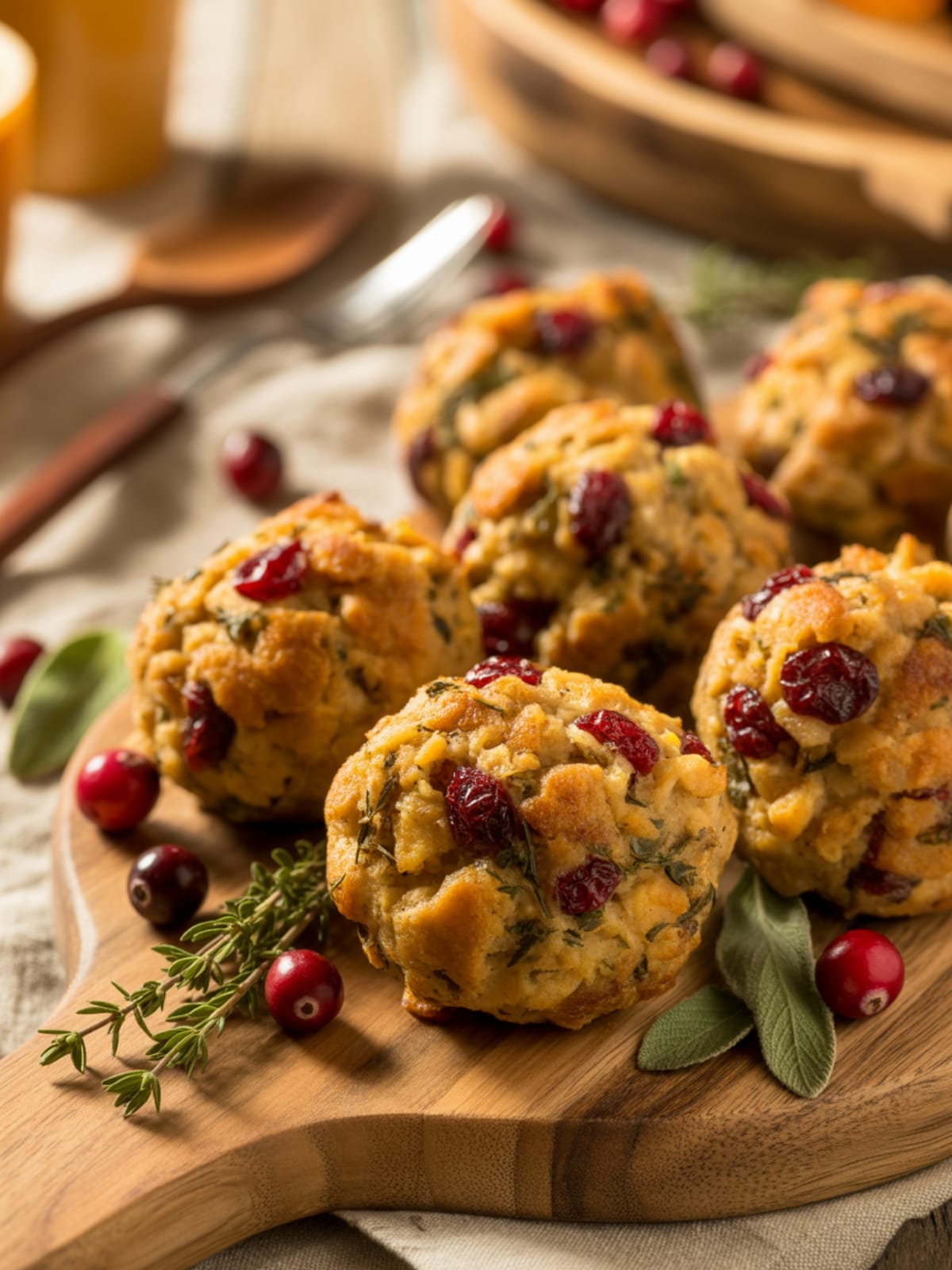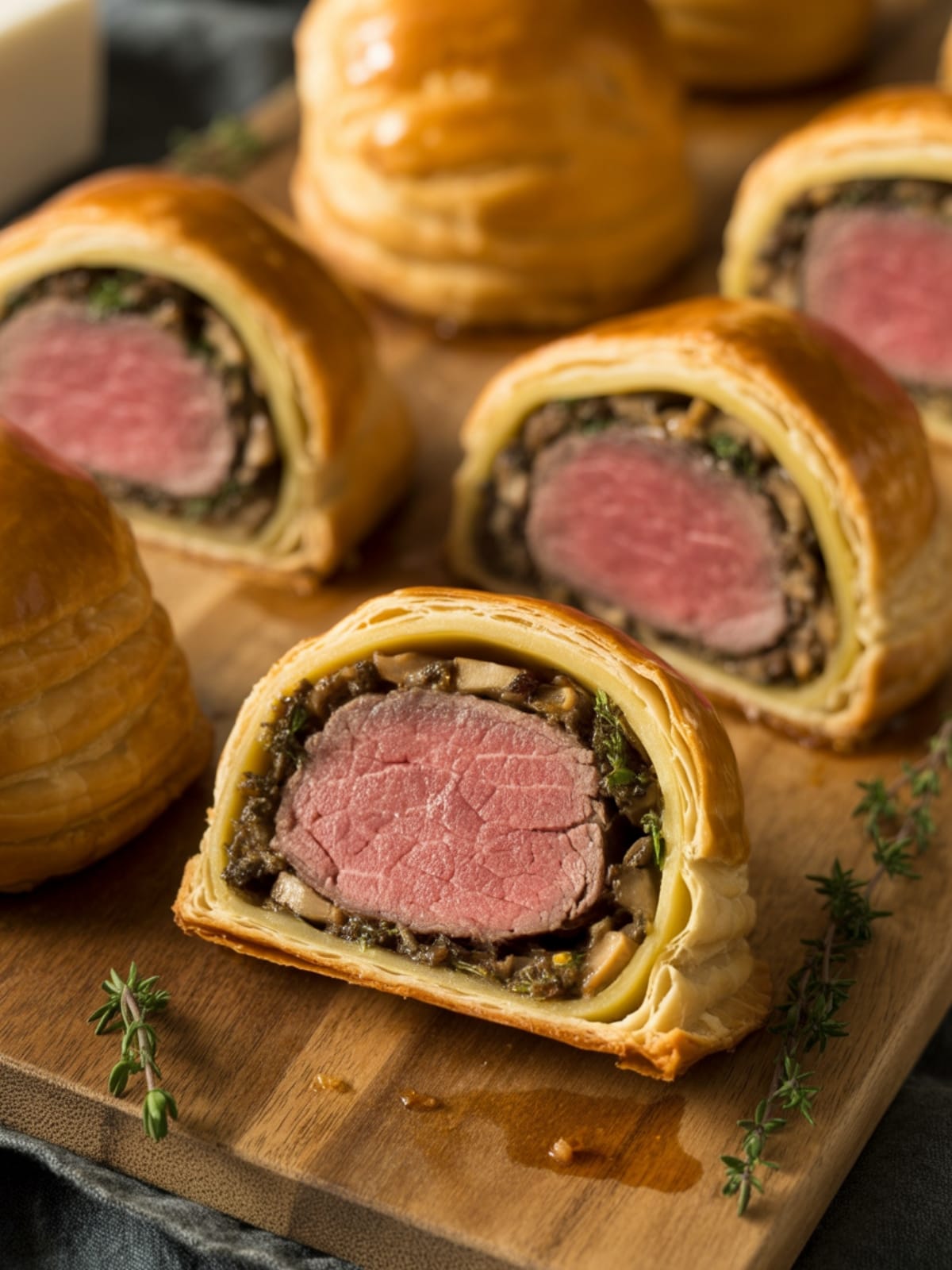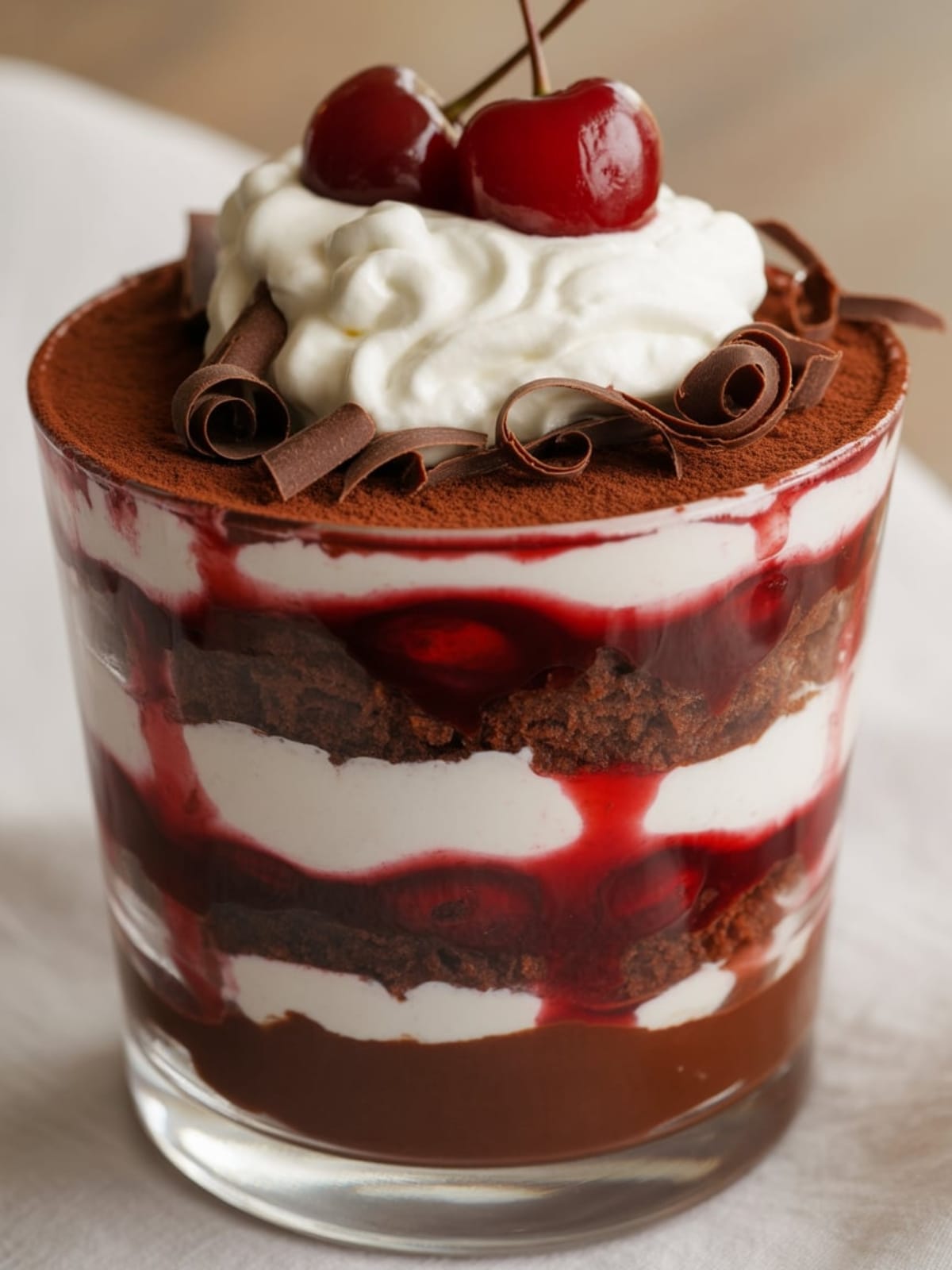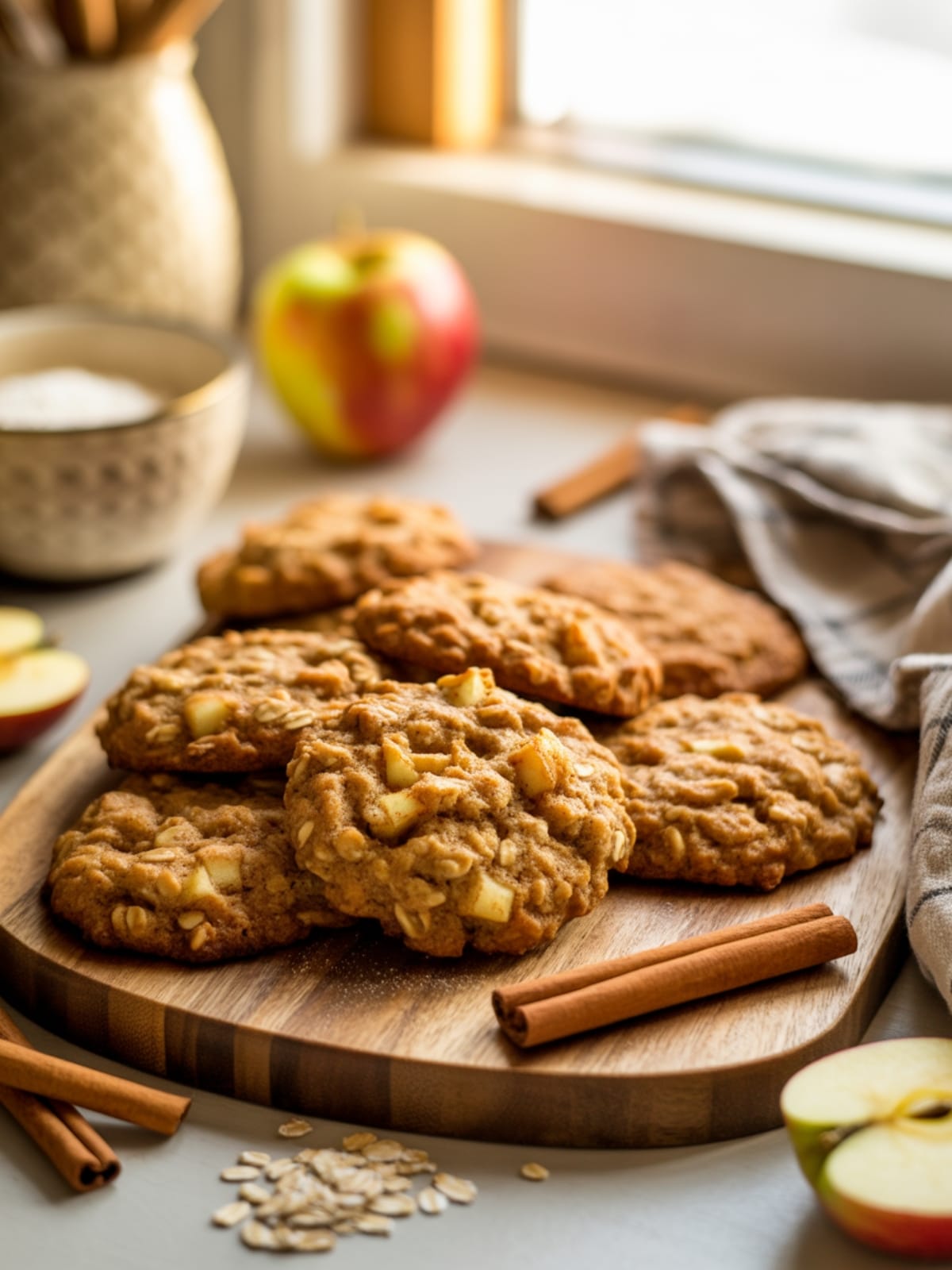Picture this: your holiday table adorned with a beautiful, rolled chocolate cake that looks like it came straight from a snowy forest. That’s the magic of a Traditional Chocolate Yule Log—or Bûche de Noël as the French call it. This showstopper dessert not only celebrates Christmas with style but also brings a rich history to your festivities.
Don’t let its elaborate appearance intimidate you! I’m here to walk you through creating this classic treat that will have your guests asking if you secretly trained as a pastry chef.
Why This Recipe is Awesome
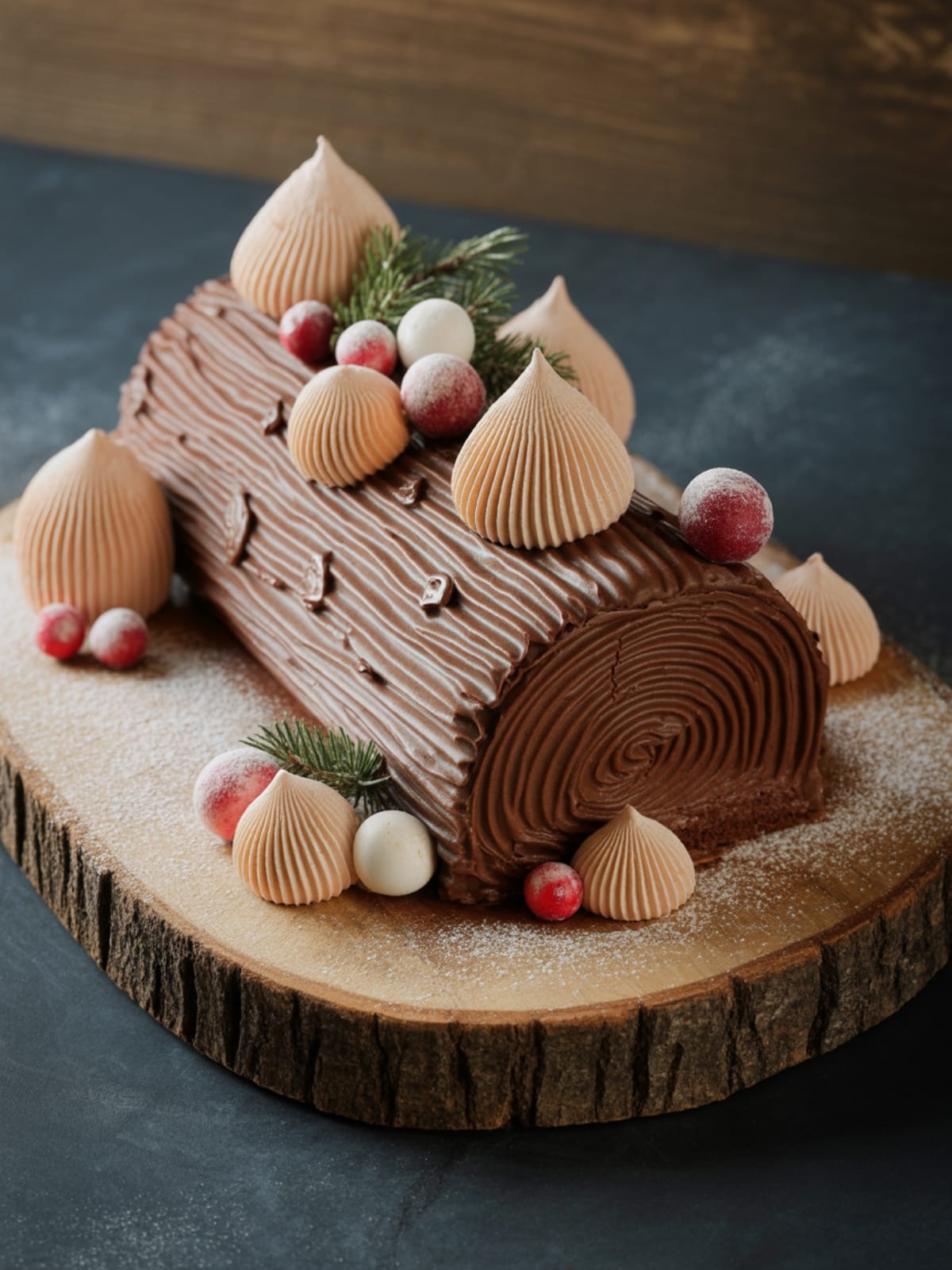
The Traditional Chocolate Yule Log isn’t just another dessert—it’s a conversation piece with centuries of holiday tradition behind it. Dating back to medieval times when families would burn actual logs for good luck, this edible version brings that custom to your table in the most delicious way possible.
What makes this recipe particularly special is its perfect balance of textures: a light, springy chocolate sponge cake wrapped around silky chocolate buttercream, creating an irresistible contrast in every bite. While it looks impressively complex, I’ve broken it down into manageable steps that even novice bakers can master. And unlike many holiday desserts that can be overwhelmingly sweet, this Yule Log offers sophisticated chocolate flavor that appeals to adults and kids alike.
Equipment Needed: Jelly roll pan, parchment paper, electric mixer, sifter, offset spatula, clean kitchen towel, cooling rack
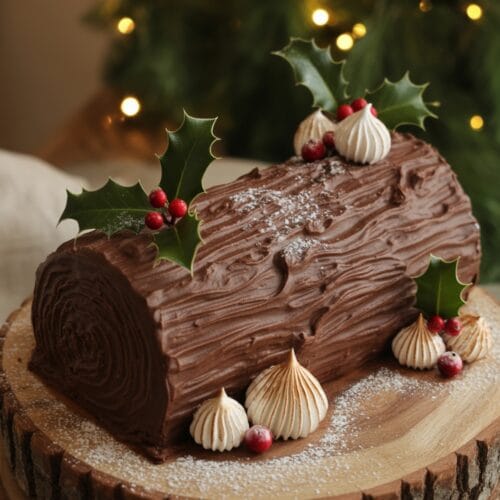
Traditional Chocolate Yule Log
Ingredients
For the Chocolate Sponge
- 6 large eggs separated
- 3/4 cup granulated sugar divided
- 1/3 cup unsweetened cocoa powder
- 1/4 cup all-purpose flour
- 1/4 teaspoon salt
- 1/2 teaspoon vanilla extract
- Powdered sugar for dusting
For the Chocolate Buttercream
- 1 cup 2 sticks unsalted butter, softened
- 3 cups powdered sugar sifted
- 1/3 cup unsweetened cocoa powder
- 3 tablespoons heavy cream
- 1 teaspoon vanilla extract
- 1/4 teaspoon salt
For Decoration
- Extra cocoa powder for dusting
- Powdered sugar for “snow”
- Sugared cranberries and rosemary sprigs optional, for garnish
- Chocolate shavings optional
Instructions
- Prepare your baking surface and oven. Preheat oven to 350°F (175°C). Line a 15×10-inch jelly roll pan with parchment paper, leaving an overhang on all sides. Grease the parchment paper lightly.
- Beat egg whites until foamy. In a large bowl, beat egg whites with an electric mixer until soft peaks form. Gradually add 1/4 cup of the sugar and continue beating until stiff, glossy peaks form.
- Prepare the egg yolk mixture. In another bowl, beat egg yolks with remaining 1/2 cup sugar until pale and thick (about 3-4 minutes). Mix in vanilla extract.
- Combine the dry ingredients. Sift together cocoa powder, flour, and salt. Gently fold this mixture into the egg yolk mixture.
- Incorporate the egg whites carefully. Fold about 1/3 of the beaten egg whites into the chocolate batter to lighten it, then gently fold in the remaining whites, taking care not to deflate the mixture.
- Bake the sponge cake. Spread the batter evenly in the prepared pan and bake for 12-15 minutes, until the cake springs back when touched lightly.
- Prepare for rolling while hot. Dust a clean kitchen towel generously with powdered sugar. When the cake comes out of the oven, immediately invert it onto the towel. Carefully peel off parchment paper.
- Roll the cake while warm. Starting from the short end, roll the cake up with the towel inside. Place seam-side down on a cooling rack and let cool completely (about 1 hour).
- Make the chocolate buttercream. Beat butter until creamy. Gradually add sifted powdered sugar and cocoa powder, alternating with heavy cream. Beat in vanilla and salt until smooth and fluffy.
- Unroll and fill the cake. Gently unroll the cooled cake and remove the towel. Spread about 2/3 of the buttercream evenly over the cake, leaving a 1/2-inch border.
- Re-roll and chill the log. Carefully roll the cake back up (without the towel). Place seam-side down on a serving platter and refrigerate for 30 minutes.
- Create the branch effect. Cut a diagonal slice from one end of the log (about 2 inches). Attach this piece to the side of the log using buttercream to create a branch.
- Frost and decorate. Cover the entire log with remaining buttercream, using a fork to create bark-like texture. Dust lightly with cocoa powder and powdered sugar to create a realistic woodland effect. Add sugared cranberries and rosemary sprigs if desired.
- Chill before serving. Refrigerate for at least 1 hour or up to 24 hours before serving to allow flavors to meld and frosting to set.
Notes
- The key to a successful roll is working with the cake while it’s still warm from the oven.
- If the cake cracks slightly during rolling, don’t worry—the buttercream will cover minor imperfections.
- For a more intense chocolate flavor, add 1/2 teaspoon espresso powder to the cake batter.
- The log can be prepared up to 2 days ahead and stored in the refrigerator.
- Bring to room temperature for about 20 minutes before serving for the best flavor and texture.
- For a festive twist, add 1-2 tablespoons of rum or brandy to the buttercream.
Calories & Nutritional Info
- Calories: Approximately 420 calories per slice (based on 10 servings)
- Macronutrients: 24g fat, 49g carbohydrates, 4g protein per serving
- Allergen Information: Contains eggs, dairy, and wheat
- Dietary Suitability: Vegetarian, can be adapted for gluten-free diets by substituting gluten-free flour
Common Mistakes to Avoid
- Overbaking the sponge: This will make it dry and prone to cracking. The cake should be springy to the touch.
- Waiting too long to roll: The cake must be rolled while still warm to prevent cracking.
- Not using enough powdered sugar on the towel: This acts as a release agent to prevent sticking.
- Spreading buttercream too close to the edges: This causes overflow when rolling.
- Rolling too tightly: Apply gentle pressure to avoid squeezing out the filling.
- Rushing the chilling time: Proper chilling helps the log hold its shape and flavors develop.
Alternatives & Substitutions
- Filling variations: Try coffee buttercream, whipped ganache, or chestnut cream for different flavor profiles.
- Dairy-free option: Use plant-based butter and coconut cream instead of heavy cream.
- Gluten-free adaptation: Substitute an equal amount of gluten-free flour blend for all-purpose flour.
- Flavor enhancements: Add orange zest to the sponge or a splash of liqueur to the filling.
- Lighter version: Use whipped cream instead of buttercream for a less rich filling.
- Nut addition: Incorporate finely chopped hazelnuts or almonds into the sponge batter for texture.
FAQs
Why did my cake crack when I rolled it?
The most common reason is that the cake was either overbaked or cooled too much before rolling. Always roll your cake while it’s still warm from the oven. Minor cracks will be covered by frosting, so don’t worry too much!
Can I make this Yule Log ahead of time?
Absolutely! The Traditional Chocolate Yule Log can be made 1-2 days in advance and stored in the refrigerator. In fact, the flavors often improve with a bit of time to meld together.
Is there a way to make this recipe less sweet?
Yes, you can reduce the sugar in the buttercream by up to 1/2 cup without affecting the texture significantly. Using dark cocoa powder also creates a more intense, less sweet chocolate flavor.
How do I create realistic-looking bark texture?
The easiest method is to run a fork gently through the buttercream in long strokes. For added realism, create some knots by making circular motions with the fork in a few spots, then dust lightly with cocoa powder.
Can I freeze leftover Yule Log?
Yes, you can freeze portions for up to a month. Wrap individual slices tightly in plastic wrap, then foil. Thaw in the refrigerator overnight before serving.
Final Thoughts
The Traditional Chocolate Yule Log is more than just a dessert—it’s a holiday memory in the making. Don’t be intimidated by its elegant appearance; embrace the process and remember that even imperfect Yule Logs have their rustic charm. As you share this beautiful creation with loved ones, you’re also sharing in a centuries-old tradition that celebrates warmth and sweetness during the darkest days of winter.

